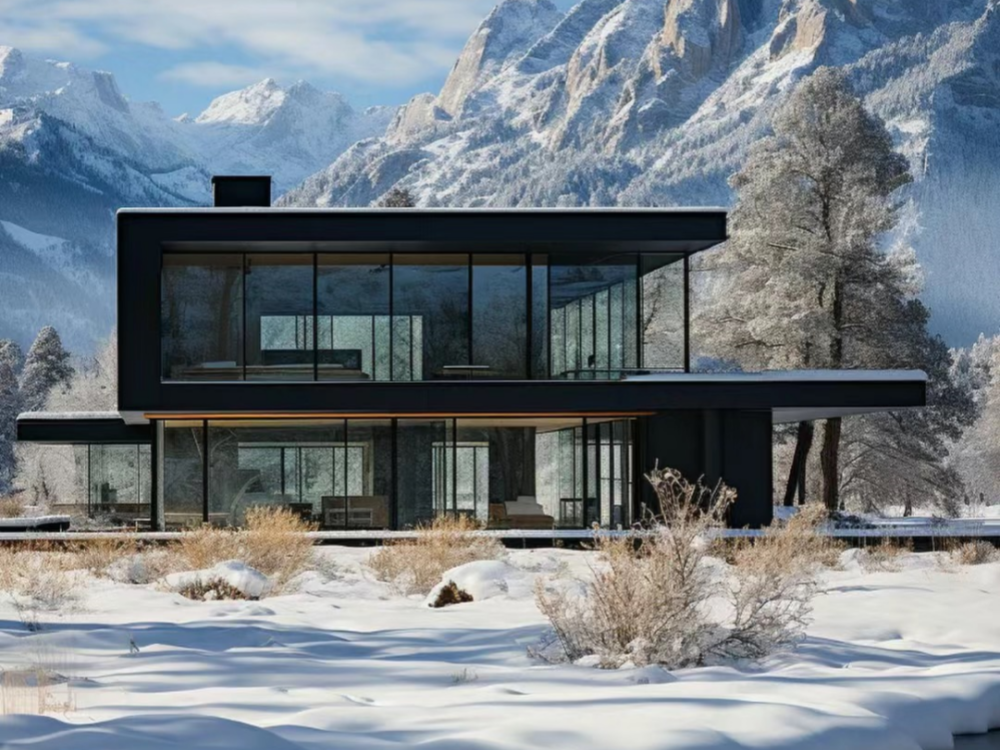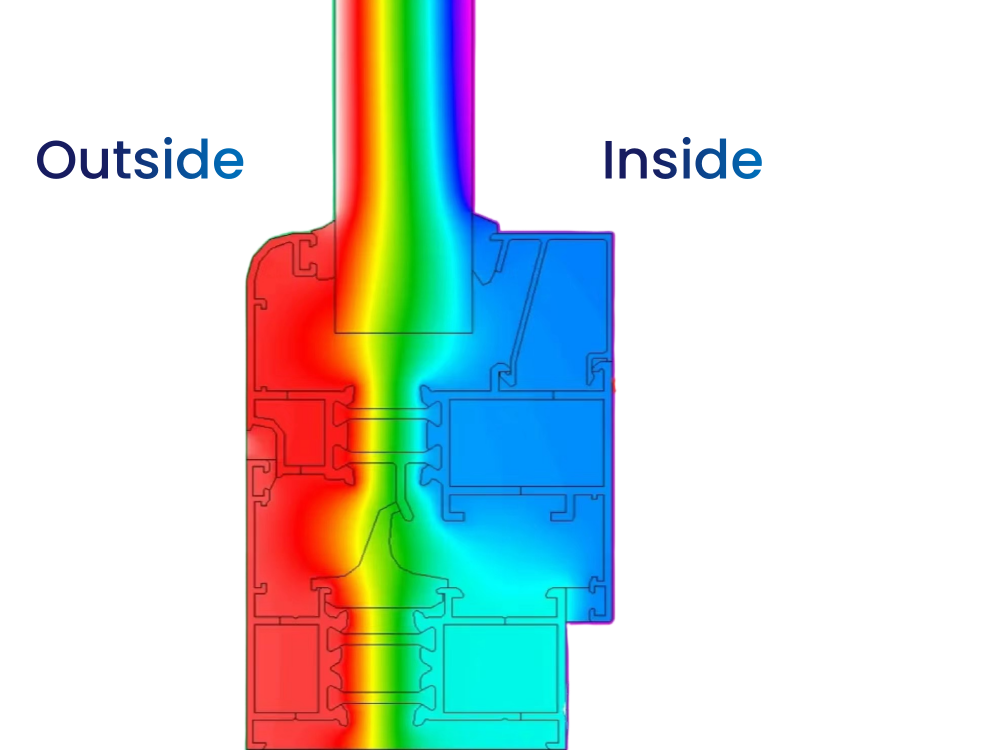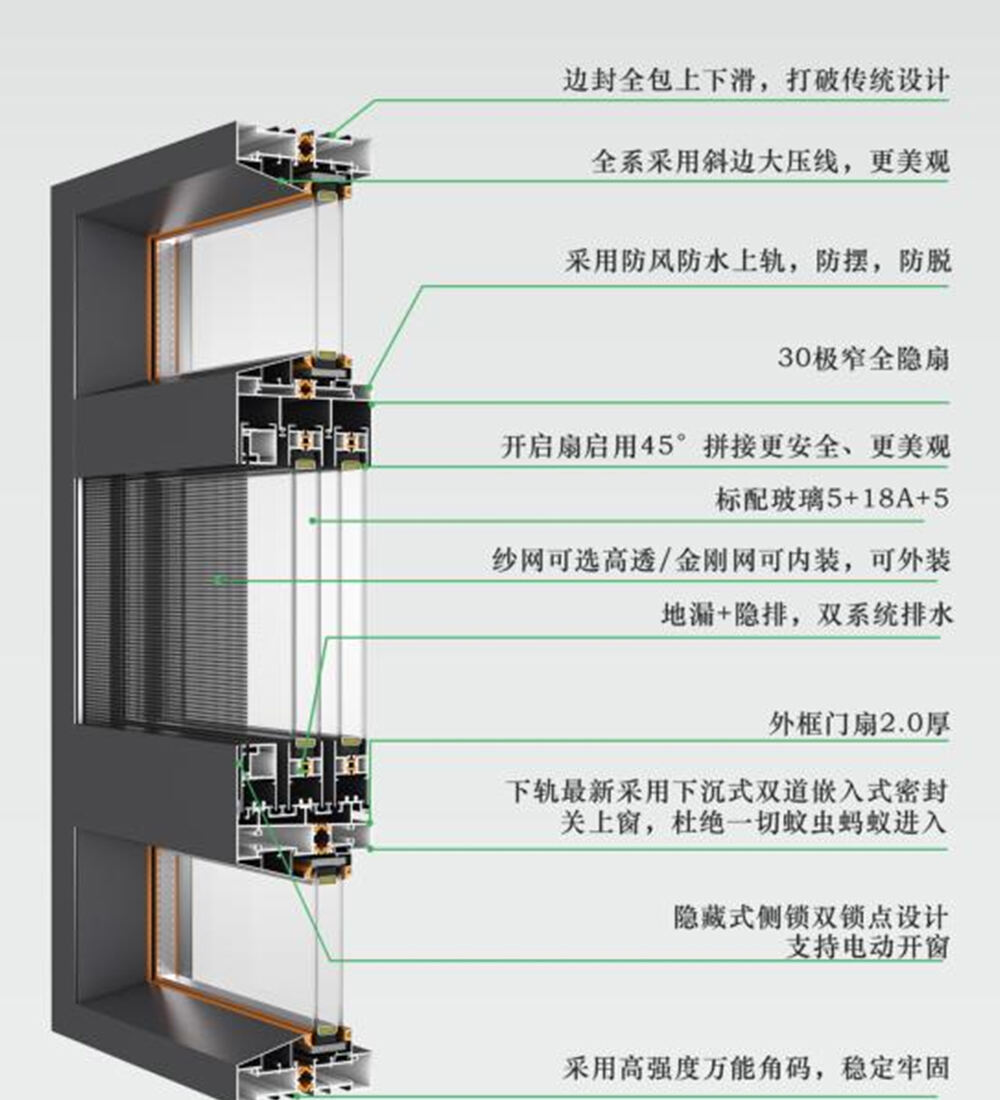NEWS
How to choose energy-saving doors and windows?
Energy efficient windows and doors
Here are some common features and benefits of energy-efficient windows and doors:
1.Double or Triple Glazing: Energy-efficient windows often have two or three panes of glass with insulating gas between them. This helps to reduce heat loss and improve insulation.
2.Low-E Coatings: Low-impassivity (Low-E) coatings on windows help to reflect infrared light, keeping heat inside during the winter and outside during the summer.

3.Insulated Frames: Window frames made of materials like vinyl, fiberglass, or wood composite offer better insulation properties than traditional aluminum frames.
4.Weather Stripping and Seals: Properly sealed windows and doors prevent drafts and air leakage, improving the overall energy efficiency of a building.

5.Energy Star Ratings: Look for windows and doors that are Energy Star certified, as they meet strict energy efficiency guidelines set by the Environmental Protection Agency (EPA).
6.UV Protection: Energy-efficient windows may also offer protection against UV rays, which can help reduce fading of furniture and flooring inside the building.

7.Cost Savings: By reducing the amount of energy needed for heating and cooling, energy-efficient windows and doors can lead to lower energy bills over time.

When choosing energy efficient doors and windows, you should consider the following key factors:
1.Selection and design of profiles: The thermal conductivity co-efficient and cross-sectional design of profiles are important factors that affect the energy-saving performance of doors and windows. Special attention should be paid to the fact that the insulation strips on the frame and sash material should be on the same side (whether facing indoors or outdoors) to avoid avoiding the insulation strips through hardware accessories, thus affecting the energy-saving effect of the doors and windows.
2.Glass selection: Glass is one of the key factors affecting the energy-saving performance of doors and windows. Insulated glass, heat-reflective coated glass or Low-E insulated glass are effective choices to improve the thermal insulation performance and energy-saving effect of doors and windows. These types of glass can effectively reduce heat transfer and keep indoor temperatures stable.
3.Materials and workmanship: High-quality energy-saving doors and windows should be made of high-quality aluminum with a wall thickness greater than 1.4mm, with uniform color and no defects on the surface. Avoid choosing profiles with large color differences, dents or bulges, and avoid surface defects.
To sum up, when choosing energy-saving doors and windows, factors such as profile design, glass type, material technology, etc. should be comprehensively considered to ensure that the selected doors and windows have good energy-saving performance and usage effects.


